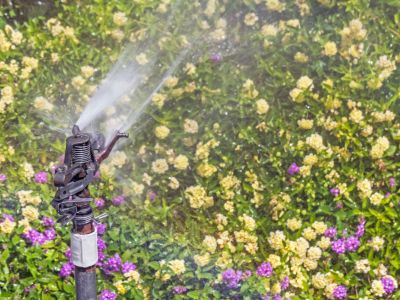How Much Water Do Lantana Plants Need?
Plant watering needs vary by species and region. Lantana watering needs will differ in humid regions versus arid zones. Too much water may cause root rot and other problems while too little can affect foliage and flower development. Water application is always a fine line between too much and too little in any species. Watering lantana plants is necessary, but how do you determine how much and how frequently to do so? Lantana plant watering is an important part of the species care. As natives of the tropical Americas, lantana are adapted to humid conditions and fairly moist soil. Their drought tolerance is brief and the plants will suffer if they are not given supplemental irrigation. The actual amount of moisture necessary will fluctuate in different conditions. For instance, plants in hanging baskets are exposed to air and evaporation more than in-ground plants. Plants that are mulched to conserve moisture will do better with less water. Each situation needs to be vetted dependent upon the location of the plant.
Watering Lantana Plants in Containers
Determining lantana watering needs is often as simple as inserting your finger into the soil. It sounds simple and it is. Hanging baskets and plants in containers do not have the blanket of soil that in ground plants experience. The roots are more exposed to air and consequential evaporation, meaning container plants require more frequent irrigation than their in-ground counterparts. The smaller soil area to retain moisture and the confinement of the roots also means they cannot seek more moisture in nearby soil. If you use the finger test to check moisture levels, you can be sure when to water lantanas. If soil is dry to your touch, it is time to add moisture. This may be every two days or even every day in hot, arid regions. Where humidity is high, plants can do well with just watering twice per week.
In-Ground Lantana Plant Watering
Plants in the ground have more space to develop a broader root system, which can seek out moisture. They should be watered once per week during their blooming season. Ensure that the soil drains freely, as even weekly watering can create boggy conditions if soil is not loose. This may lead to root rot and other problems. Covering the root zone with a good organic mulch will help hold moisture in while gradually releasing nutrients for plant uptake. Mulch is useful even in hot, dry conditions and it also can help extend the growing season in cooler climates by holding heat in the soil. Avoid overhead watering in both container and in-ground plants, as it can cause foliar diseases due to fungal growth.
